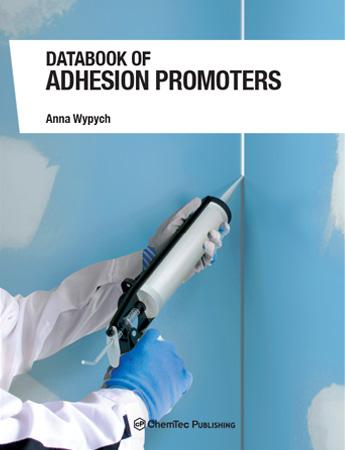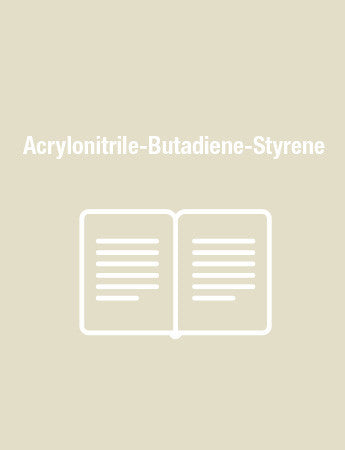Databook of Adhesion Promoters contains data on the most important products in the use today. Three hundred sixty leading products have been included in this book. The additives belong to 31 chemical groups listed in the table of contents below. The information on each adhesion promoter included in the Databook of Adhesion Promoters is divided into five sections: General information, Physical properties, Health and safety, Ecological properties, and Use & Performance. The data belong to about 150 data fields, which accommodate a variety of information available in the source publications. The description of each section below gives more detail on the composition of information (only major groups of properties are listed for clarity).
In General information section, the following data are displayed: name, CAS #, EC #, Acronym, Active matter, Chemical category, Common name, Common synonym, Components, Complexed organics, Empirical formula, Functional organic group, General description, Molecular mass, Mixture, Metal content, Number of metals, Organoreactive group, RTECS number, Solids content.
Physical-chemical properties section contains data on State, Odor, Color, Boiling point, Melting point, Density, Diluents, Neutralizing agent, pH, Refractive index, Sulfur content, Surface tension, Solubility in water, Specific gravity, Specific heat, Specific surface area, Thermal decomposition product, Vapor density, Vapor pressure, Viscosity, and Volatility.
Health and safety section contains data on Flash point, Flash point method, Autoignition temperature, NFPA Health, NFPA Flammability, NFPA Reactivity, HMIS Health, HMIS Fire, HMIS Reactivity, HMIS Personal protection, UN number, UN Risk Phrases, R, UN Safety Phrases, S, DOT Hazard Class, UN/NA hazard class, UN packaging group, ICAO/IATA Class, IMDG Class, Proper shipping name, Rat oral LD50, Mouse oral LD50, Rabbit dermal LD50, Inhalation rat LC50, Route of entry, Skin irritation, Eye irritation, Ingestion, Inhalation, First aid: eyes, skin, and inhalation, Carcinogenicity by ACGIH, IARC, NTP, and OSHA, Mutagenicity, and TLV - TWA 8h (ACGIH, NIOSH, OSHA)
Ecological properties section contains data on Atmospheric lifetime, Biodegradation probability, Aquatic toxicity LC50 (Green algae, Rainbow trout, Bluegill sunfish, Fathead minnow, Zebrafish, and Daphnia magna), Bioaccumulative potential, Bioconcentration factor, Biodegradation probability, BOD/COD ratio, Biological oxygen demand, Chemical oxygen demand, Theoretical oxygen demand, Partition coefficient (log Kow and log Pow) and Stability in water.
Use & performance section contains information on Manufacturer, Outstanding properties, Recommended for polymers, Recommended for products, Recommended applications, Processing methods, Concentration used, Guidelines for use, Food approval, Alternative products, and Conditions to avoid.
In addition to the information on commercial products used as adhesion promoters, there is also available Handbook of Adhesion Promoters which contains theoretical and practical knowledge required to effectively formulate products used in various applications. Both books contain the most recent information available in literature, patents, and published by manufacturers and users of these products.
The book is recommended for readers interested in all aspects of polymers and plastics, with special attention to the development, studies, legislation, and production of coatings, paints, adhesives, sealants, coated fabrics, laminates, conveyor belts, films, inks, tapes, gaskets, electronics, pharmaceuticals, corrosion protection, and many other products.
2. Information on the data fields
3. Adhesion promoters
a. Acrylates
b. Amines, amides, and amidoamines
c. Aryl diazonium salts
d. Benzene derivatives
e. Carbamid resin
f. Chlorinated polyolefins
g. Crosslinkers
h. Epoxides
i. Inorganic compounds
j. Ionomers
k. Isocyanates
l. Isocyanurates
m. Lignin
n. Maleic anhydride modified polymers
o. Melamine
p. Monomers
q. Oligomers
r. Phenol novolac resins
s. Phosphoric acid esters
t. Polymers and copolymers
u. Polyols
v. Resorcinol
w. Rosin
x. Silanes
y. Silane+silica
z. Silane+silicate
aa. Silane+titanate
bb. Sucrose derivatives
cc. Sulfur compounds
dd. Titanates




